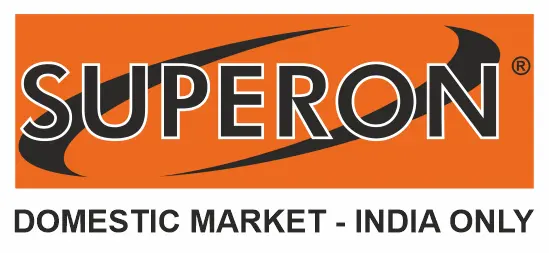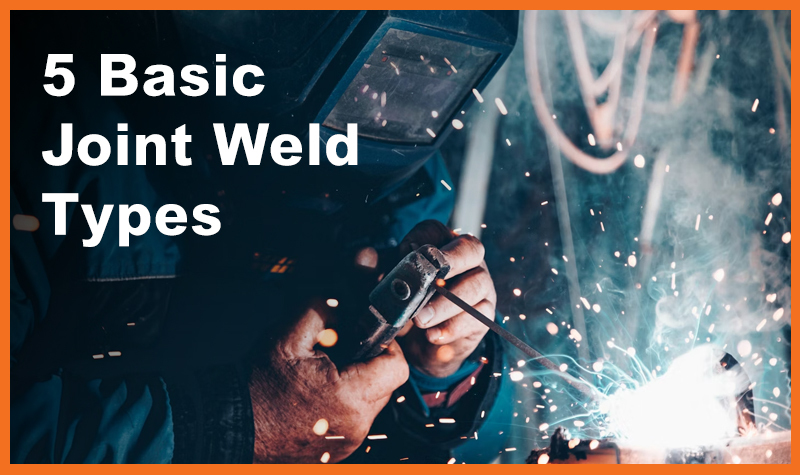Welding, a intricate task, demands an understanding of assorted tactics and practices. For a successful outcome, welders must know the different methods used in their field, including types of weld joints. Simply put, a joint is how materials come together. With unlimited applications, welding needs a range of welds and joints to match every job. There are 5 major types of welding joints and their uses. They are butt joint, tee joint, corner joint, lap joint and edge joint. Butt joints - the most frequently used, come in various forms, depending on elements like the shape and size of the groove. Tee joints appear when two items intersect at a right angle and different welding methods can produce them. Corner joints join in a corner and may take the form of either V-groove or square butt joints. Continue reading to discover every weld type and its impact on a career in welding.
Why Understanding the Applications of Different Weld Joint Types Is Important?
"Weld joint design" is a term that relates to how metal pieces are arranged or joined. The design of each joint impacts the quality and price of the final weld. Selecting the right joint design for a welding task requires a keen eye and expertise. That's why having a sound knowledge of different types of weld joints is key. Understanding their uses could help welders create strong, top-quality welds. There are five basic weld joint types often seen in the industry:
- Butt joint welding
- Tee joint welding
- Corner joint welding
- Lap joint welding
- Edge joint welding
The 5 Basic Joint Weld Types
Let’s know more about the five major types of welding joints and their uses. You will also get tips for welding each type to help achieve the best results.
Butt Joints
Butt joints connect two pieces in the same plane where their edges meet or lay parallel. Welders frequently use this type to join plate, pipe, tubing, etc. Projects may include making a car's exhaust system or joining door panels. Butt joints, when correctly done, are strong. Design options include:
- Without any backing, known as an open root, or with backing, usually called a backing bar or strip.
- The edges being joined may need no preparation. A square joint design appears when fitted, termed a square groove.
- Edgy portions can be beveled partially or fully. Edge preparations need a specific angle, creating what's known as a V-groove or single bevel. Edges might touch each other or can have a specified gap to create a root opening.
- The nature of the material or application suggests whether to leave the butt joint's edges square or beveled. Beveled edges usually give stronger welds but require more time and weld deposit.
Welders use square grooves on thinner materials where edge preparations aren't possible, like sheet metal or materials less than 1/8 inch. Listed below are some typical examples of butt weld joints:
- Square
- Single bevel
- Double bevel
- Single J
- Double J
- Single V
- Double V
- Single U
- Double U grooves
Key advice for butt joints: Decide whether edges need any preparation or if a square groove design suffices. Establish if root opening is necessary or if welding the pieces without one will work. Ensure proper alignment of the pieces to prevent problems during welding and to streamline the process.
Tee Joint Welding
A T-joint forms when two materials align to form a "T" shape. This happens when you connect one material's edge to another's flat surface. T-joints are sturdy, especially if you weld them from both sides. They're popular in the construction of steel structures, tubes, and equipment. During welding, it's critical to penetrate the weld's upper part. There are several welding methods suitable for T-joints:
- Plug weld
- Slot weld
- Bevel-groove weld
- Fillet weld
- J-groove weld
- Melt-through weld
- Flare-bevel-groove weld
T-joints need little to no prep and simplify your welding tasks if you apply the correct techniques and settings. You can keep the joint edges as they are, or shape them through grinding, cutting, or machining. While working on a T-joint, remember that stress should align with the weld. If stress comes from the opposite side of the joint, the weld may fail. To prevent this, weld both sides to attain full strength or when stress is expected from every direction.
T-joints are a popular design because of their versatility and how easy they are to weld in different positions - flat, horizontal, vertical, or overhead. This is in stark contrast to other joint designs that pose challenges when welding out of position. If you're welding a T-joint at a right angle, it's advised to divide the gap using a 45-degree work angle. This guarantees proper welding penetration on both materials. If the T-joint involves materials of different thickness, focus your welding more on the thicker material.
Let's remember some key pointers for T-joints: Weld both sides of the joint to boost durability. Ensure the weld is on the stress-baring side. Employ a 45-degree work angle for equal penetration on both materials.
Corner joint welding
Corner joints connects two pieces at a right angle, forming an L shape. Assembling these joints is a breeze, there's minimal edge work. These are the go-to for projects where you need a sturdy, square frame, like a welding table construction. Type of welds used for corner joints:
- Bevel-groove weld
- Corner-flange weld
- Edge weld
- Fillet weld
- Flare-V-groove weld
- J-groove weld
- Spot weld
- Square-groove weld or Butt weld
- U-groove weld
- V-groove weld
Corner joints have two types, open corner and closed corner. A closed corner joint has one edge flat against the other. Whereas in an open corner joint, the edges meet at their ends with a visible gap, showing each metal's thickness. Open or closed, your choice hinges on how thick the material is and how much strength the job demands. When dealing with open corner joints on slimmer materials, you might have to speed up your travel to avoid charring the metal. As they form a V shape, open corner joints might need a heavier welding deposit, depending on the thickness.
The beauty of a closed corner joint’s weld face is that you can grind it for a seamless changeover from the weld to the base material. One crucial thing when making a corner joint is ensuring a proper fit for your pieces. If your project calls for a 90-degree angle, ensure it’s a true square. Be mindful of warping that may occur during welding that may alter the angle after welding. A good way to ward off distortion is using a jig or a fixture to hold everything still.
To summarize corner joint tips: Go faster with open corner joints on thinner material to avoid overheating. Ensure it fits right to have the desired angles and reduce the chances of warping.
Lap joint welding
The pieces overlap each other in a kind of configuration, which creates a lap joint. The weld is placed in the joint where the two meet. Lap joints have quite a bit of mechanical properties, mainly because if you weld both sides of overlapping parts, you have additional reinforcement.
Calculate the overlapping required in the joint based on the thickness of two workpieces. The thicker your material, the more overlap you'll require. Lap joints are extremely common for joining plates or sheet metal—say, when you want to add some flooring in your vehicle or tack up some sheet metal over a hole.
If you use lap joints, it is essential for you to forward to not allow any gap between both workpieces. You want these very much flush. For thinner materials such as sheet metal, turn down your amperage and increase your travel speed on a lap joint to avoid distortion as well as burning through.
Weld types in the Lap Weld Joint:
- Fillet Weld
- Spot Weld
- Seam Weld
- J-Groove Weld
- Bevel Groove Weld
- Flare Bevel Groove Weld
- Flanged Lap Joint
Picking a butt joint or a lap joint? A butt joint will give a smoother contour, keeping your pieces level. On the other hand, lap joints offer extra strength for high-strength parts, but they stand out more and won't provide a smooth contour.
Quick advice for lap joints: Double weld the overlapped bits for sturdier results. For thicker stuff, use a bigger overlap between the pieces. Ensure the two parts align well before you start welding.
Edge joint welding
An edge joint is formed when after the fit up of the workpieces the edges are parallel or nearly so. These joints are always applied when the workpieces will not be exposed to additional stress. You should not use an edge joint if a particular piece, or both pieces, are expected to undergo either impact or any other kind of stress.
It is possible to distinguish the edge joints in accordance with the preparation of edges. This leaves them square or grooved square (square groove), but can also be prepared by grinding, cutting or machining them into V-groove, J-groove or U-groove (similar to preparing butt joints). These preparations enhance the weldment by providing sufficient penetration or enhancing the overall weld exposure when welding an edge joint. You can also temper all sides of an edge joint to increase its stiffness as well as its other properties.
Edge joints and corner joints have many features in common as regards both, their structure and application. A corner joint is usually the periphery of the workpieces while an edge joint is at the center of the workpiece. Whether a decision is made in favor of an edge joint or a corner joint depends on the application requirement as well as the thickness of the material.
Edge joints can normally be welded directly but sometimes may need postweld grinding where the weld needs to be made as a part of the base material to improve appearance.
Key tips for edge joints:
- However, these joints should not be used in applications that are normally exposed to impacts or stress.
- Utilize a groove edge preparation to either provide sufficient penetration or increase weld joint sturdiness.
- It is advisable to have an edge joint on all the four sides for additional strength of the joint.
Wrapping Up
Knowing which joint to select from the various welding types hinges on the project's desired strength, the parts' layout, and the weld's area & ease of access. Consistently evaluate each component's rough weight-bearing needs to pinpoint the most suitable welding joint. Here at Superon Technik, we present a diverse selection of inventive items, including Welding Filler Wire Welding Auxiliaries. To delve deeper, don't hesitate to contact us immediately.

